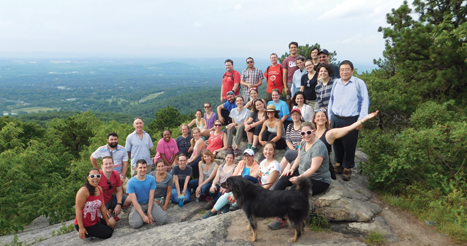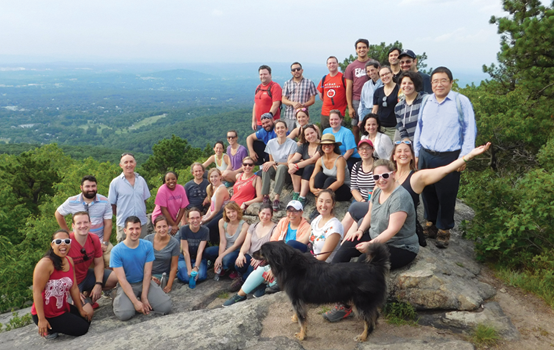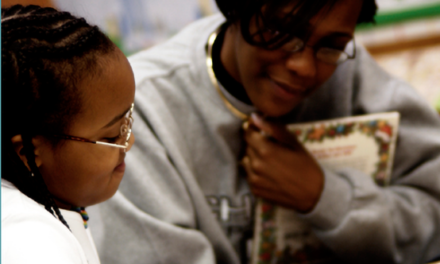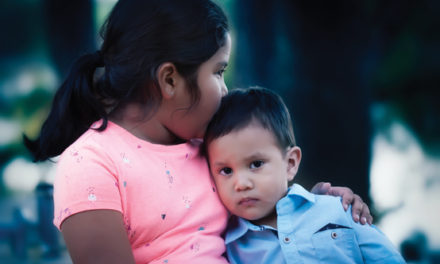Since 2004, eight of New York City’s leading cultural institutions — including museums, zoos, and botanical gardens — have worked with the New York City Department of Education to support effective science instruction in the city’s middle schools.
In 2002, the American Museum of Natural History (AMNH) approached the New York City Department of Education to offer its assistance in responding to a new policy mandate. Out of concern that too few middle graders were getting a solid foundation in the sciences, city officials had declared that in order to graduate from 8th grade and enroll in high school, every student must complete at least one extensive, multipart scientific investigation. At the time, however, the schools were facing a severe shortage of science teachers overall, much less ones who were prepared to guide students in conducting complex, independent projects. How would the school system make up for this lack of expertise? Perhaps AMNH could help fill the gap.
The museum’s education staff had vast experience creating hands-on activities for children of all ages, with input from more than 200 resident scientists doing research in fields ranging from astrophysics and anthropology to biology, paleontology, and zoology. Further, across the city’s five boroughs were several other scientific institutions that had valuable resources and expertise to contribute, including the Brooklyn Botanic Garden, New York Botanical Garden, Queens Botanical Garden, New York Hall of Science, Staten Island Zoo, Bronx Zoo, and the New York Aquarium. Working together, they could address a broad range of content and serve thousands of students.

In 2004, the school system agreed to pursue a partnership with AMNH and the seven other cultural institutions. Thus was born Urban Advantage, a citywide collaborative that provides rich opportunities for middle graders to engage in authentic scientific investigations while also helping teachers strengthen their scientific content knowledge and pedagogy.
Over the past 13 years, the program has grown dramatically: It began by working with 31 schools. By 2017, it served 289 schools (or nearly half of the middle schools in New York City), reaching more than 80,000 students, who are more or less representative of the school system’s student population as a whole: 75% of participants are black and/or Hispanic, and 12% are English language learners.
Urban Advantage offers some important lessons not just for those who seek to improve science teaching but for all educators who want to create strong partnerships among school districts, museums, and other cultural institutions.
The name Urban Advantage is meant to highlight the many ways students and families can benefit from New York City’s diverse environment and cultural institutions. In fact, participating in the program does appear to be beneficial: Attending an Urban Advantage school increases a student’s likelihood of being proficient in science by about two percentage points in the school’s first year in the program, with larger effects of five to seven percentage points in subsequent years. For Hispanic students and male students, participation is associated with even larger gains (Weinstein & Whitesell, 2015).
Additionally, teachers give strong marks to Urban Advantage’s approach to professional development. During the 2016-17 school year, 835 middle school science teachers opted to participate, and, on average, teachers choose to return to the program for at least four years (with some returning for 10 years or more). As one longtime participant noted, her experience in UA has improved student writing as well as their research: “We really see this in our student’s argument writing. Students are bringing in a lot more content to support their claims — and with a deeper understanding.”
Still going strong: Four keys
How has this long-standing partnership — across multiple cultural institutions and a large school district — sustained itself? Urban Advantage offers some important lessons not just for those who seek to improve science teaching but for all educators who want to create strong partnerships among school districts, museums, and other cultural institutions. In particular, the program provides concrete examples of principles that researchers identify as critical to the long-term success of educational partnerships (Coburn & Stein, 2010; Coburn, Penuel, & Geil, 2013): agreement about the value of distributed expertise; the creation of a clear, shared vision of student learning and teacher learning; and the ability to respond and adapt to shifts in district and national contexts.
Key #1: Agreeing to distribute our expertise
The goal of supporting students’ science investigations has provided a specific and consistent focus for the program as a whole. At the same time, though, each of the individual partners takes advantage of its own distinct strengths. From the start, the designers of Urban Advantage saw value in drawing upon this full range of assets, encouraging each institution to emphasize the kind of work that it does best. For example, AMNH offers courses for teachers on topics such as using secondary data analysis; the New York Hall of Science helps students conduct projects related to physics, technology, engineering, and mathematics; the New York Botanical Garden specializes in conservation and biology; the Brooklyn Botanic Garden focuses on conducting controlled experiments with plants, and so on.
Further, each of the partners recognizes the others’ strengths and defers to their unique kinds of expertise. Thus, the eight participating institutions have never seen themselves as competing over specific subject matter or funding sources. They regularly discuss their plans, they divvy up the work equally, and each devotes two full-time positions to the program. Also, the New York City Department of Education’s science department has assigned 10 instructional specialists to help play the critical role of recruiting schools, and as the program has grown, they have been careful to ensure that participating schools equitably represent the city’s diverse population.
Key #2: Defining a shared vision of student and teacher learning
From the start, Urban Advantage has embraced an inquiry-based model of teaching and learning, featuring opportunities for students to pursue independent projects, to deepen their understandings of scientific phenomena over time, and — as a culmination of their work — to give public presentations of their findings at a Science Expo, held every June at AMNH. Even after 13 years of steady growth, the program remains as committed as ever to this vision: In 2017, more than 3,500 parents, children, and teachers attended expo to see 510 student investigations displayed in halls throughout the museum.
Further, Urban Advantage is grounded in a specific conception of teacher learning as an ongoing, hands-on experience. In their first year, teachers who are new to the program participate in 40 hours of professional development, including a two-day orientation and a five-day immersion into various ways of implementing inquiry-based approaches in the classroom, along with ways to enrich the curriculum with trips to science-rich cultural institutions. In Years 2 and 3, teachers spend 20 hours engaged in such activities, then 10 hours per year thereafter. Finally, the program also treats teacher learning as a continuum, with activities adapted to meet the varying needs that teachers tend to have at differing stages of their professional lives (Feiman-Nemser, 2001), whether their goal is to deepen their content knowledge, rethink their teaching practices, or examine their own students’ learning.
- Related: The art of partnerships: Community resources for arts education
- Related: Orchestrating a new approach to learning
Key #3: Turning a shared vision into shared practices
Over 13 years, Urban Advantage has been guided by a core commitment to inquiry-based teaching and learning in the sciences. But on a day-to-day basis, the quality of the program depends not on its overall vision so much as the specific practices that make that vision concrete.
One is the practice of looking at student work together. At monthly partner meetings, for example, staff from the eight participating institutions and from the district’s science department nearly always spend time examining and discussing an investigation that a student presented at the previous year’s expo. Many times a year, partners also engage in the collaborative scoring of samples of student projects as a way to ensure that staff are consistent in their views of what constitutes high-quality student work. As Barbara Kurland, director of learning and partnerhips at the Brooklyn Botanic Garden, explains:
One aspect of Urban Advantage that sets it apart is our interest in students’ scientific ‘doing’ and ‘thinking.’ Their projects are our evidence of their progress. To know that we brought students — through their hard-working teachers — to this point is a major motivation for me to invest as much as possible in my work and in my institution’s continued participation in the program.
Recently, Urban Advantage and the district also designed a fellows program, which will identify the most accomplished of our participating teachers, capture features of model classrooms, and use their exemplary lessons and activities as the basis for shared resources. Consistent with our vision of professional development as a deep and ongoing process, the idea is to create specific opportunities for these veteran teachers to reflect on what has made them successful and, in turn, to contribute to the development of novice and midcareer teachers.
Additionally, the program hosts an Urban Advantage retreat each spring and summer, in which the partners have a chance to review the past year, plan for the upcoming year, refine or clarify specific goals, and help staff and facilitators improve their practice. For example, at one recent retreat, partners read about and discussed the Ambitious Science Teaching Framework (Windschitl et al., 2012) developed at the University of Washington, and they rehearsed effective ways to elicit teachers’ reflections on their own science learning.
Finally, Urban Advantage is constantly seeking new ways to help the partner institutions improve their services for students and teachers. Last year, for example, the partners agreed that each would identify an urgent “puzzle of practice” (some aspect of their work that hadn’t gone as expected) and investigate it systematically, taking a careful look at their own programs. These range from an inquiry by the Queens Botanical Garden into how best to facilitate discussions about teaching practice to an effort by the American Museum of Natural History to find better ways to help teachers implement new classroom tools. Partners have opportunities to share their data with each other at monthly meetings and to present findings at a gathering in the spring.
Key #4: Adapting to changing contexts
In recent years, New York City has made some significant changes to its middle school science curriculum and requirements. Most important, the Department of Education has loosened the mandate that every student must complete an exit project in 8th grade. Currently, middle schools are encouraged to assign a long-term science investigation as a capstone, but the requirement has been de-emphasized.
For Urban Advantage, this shift has prompted a lot of soul searching: Should the program continue to focus on helping 8th graders and their teachers conduct long-term science investigations, or should it rethink the vision that has guided it since 2004?
The long-term viability of education partnerships should never be taken for granted.
Rather than appointing a small committee of select members to decide the program’s future and reconsider its vision and goals, the partners opted — in keeping with the collective ethos of the work — to bring the whole group together to debate their next steps. In May 2016, with support from an outside facilitator, they completed a series of reflective exercises and discussion protocols meant to help them hone in on the most essential parts of their work and decide which portions of the original mission should remain intact. In the process, the partners also reminded themselves of the program’s history, generating a time line of their most significant events, staff hires, new services, and expansion to new grade levels, including the recent addition of an elementary school pilot program. It was important for partners “to see how the work has grown,” explained Marnie Rackmill, professional development manager at the Queens Botanical Garden. “It provided us with context. And by pointing out which program staff were present at which times, we were better able to understand each other’s viewpoints and where they came from and to identify the professional development needs of newer staff.”
Ultimately, the partners decided that while the school system no longer requires students to conduct a long-term scientific investigation in 8th grade, the program’s original vision — to support teachers and students in designing and conducting such inquiry-based projects — continues to be immensely valuable. At the same time, though, they also agreed that the program’s mission should be expanded beyond that single goal: Urban Advantage now aims to support high-leverage science teaching practices more broadly.
Full steam ahead
After 13 years, the New York City Council and the school system continue to provide funding for Urban Advantage, and they remain fully committed to pursuing an “ecological” approach to supporting children’s learning, one that combines resources from a host of local institutions. The New York City Department of Education’s science department and program staff continue to meet frequently to discuss the teaching model and instructional changes, and all have made it a priority to stay deeply involved in the work.
The long-term viability of education partnerships should never be taken for granted, but Urban Advantage does seem to have found some reliable sources of strength. By maintaining clear roles for all partners, distributed leadership, a shared vision, and careful attention to changing contexts and local needs, the program has not just flourished but grown.
References
Coburn, C.E. & Stein, M.K. (2010). Research and practice in education: Building alliances, bridging the divide. Lanham, MD: Rowman & Littlefield.
Coburn, C.E., Penuel, W.R., & Geil, K.E. (2013). Research-practice partnerships: A strategy for leveraging research for educational improvement in school districts. New York, NY: William T. Grant Foundation.
Feiman-Nemser, S. (2001). From preparation to practice: Designing a continuum to strengthen and sustain teaching. Teachers College Record, 103 (6), 1013-1055.
Weinstein, M. & Whitesell, E.R. (2015). Rolling out and scaling up: What happens when a new program is no longer new. Paper prepared for the XXIV meeting of the Economics of Education Association, Madrid, Spain.
Windschitl, M., Thompson, J., Braaten, M., & Stroupe, D. (2012). Proposing a core set of instructional practices and tools for teachers of science. Science Education, 96 (5), 878-903. https://doi.org/10.1002/sce.21027
Originally published in September 2017 Phi Delta Kappan 99 (1), 15-20.
© 2017 Phi Delta Kappa International. All rights reserved.
ABOUT THE AUTHORS

Anna MacPherson
ANNA MACPHERSON is the senior manager of educational research and evaluation at the American Museum of Natural History, New York, NY.

Hudson Roditi
HUDSON RODITI is director of Urban Advantage at the American Museum of Natural History, New York, N.Y.

Karen Hammerness
KAREN HAMMERNESS is the senior educational research director at the American Museum of Natural History and the author of Preparing Science Teachers Through Practice-Based Teacher Education .

Linda Curtis-Bey
LINDA CURTIS-BEY is executive director, STEM, New York City Department of Education.

Maritza Macdonald
MARITZA MACDONALD is senior director of education and policy and co-director, MAT at the American Museum of Natural History, New York, N.Y.










